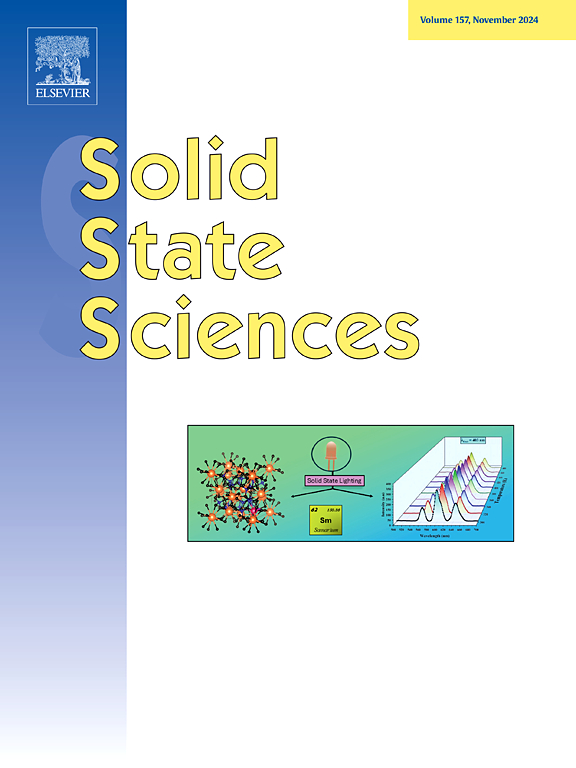Mesoporous ZnO integrated CeF3 nanoparticles for X-ray PDT
IF 3.4
3区 化学
Q2 CHEMISTRY, INORGANIC & NUCLEAR
引用次数: 0
Abstract
We report a modified two stage method to develop CeF3 embedded mesoporous ZnO nanostructures for the X-ray arbitrated photodynamic therapy (X-ray PDT) to enhance therapeutic efficacy. X-ray and electron diffraction patterns confirmed the phases of CeF3-ZnO nanocomposite. Transmission electron microscopy (TEM) revealed the morphologies and sizes for both the phases i.e. CeF3 (5–10 nm) and ZnO (150–250 nm) in the nanocomposite. Photoluminescence spectroscopy was employed to probe their energy emission and absorption characteristics of the CeF3-ZnO mesoporous nanocomposite. Moreover, a strong emission characteristic of Zn2+ ions via energy transfer from Ce3+ ions is proposed by energy transfer mechanism. The colloidal stability, hydrodynamic size, and surface charge distribution of the nanocomposite were analyzed using dynamic light scattering (DLS) for size measurement and a Zetasizer for surface charge evaluation. X-ray photoelectron spectroscopy (XPS) demonstrated the various oxidation states of each element (i.e. Ce, F, Zn and O) present in the nanocomposite sample. The BET-specific surface area was determined to be significantly high, approximately 68 m2/g, with a narrow pore size distribution and an average pore size of around 36.7 nm. The biocompatibility studies using the MTT assay on human lung adenocarcinoma alveolar basal epithelial cells (A549) demonstrated the more than 80 % cell viability at a concentration 50 μg/ml. These results highlight the potential of mesoporous ZnO embedded CeF3 nanoparticles as an effective platform for enhanced X-ray PDT.

求助全文
约1分钟内获得全文
求助全文
来源期刊

Solid State Sciences
化学-无机化学与核化学
CiteScore
6.60
自引率
2.90%
发文量
214
审稿时长
27 days
期刊介绍:
Solid State Sciences is the journal for researchers from the broad solid state chemistry and physics community. It publishes key articles on all aspects of solid state synthesis, structure-property relationships, theory and functionalities, in relation with experiments.
Key topics for stand-alone papers and special issues:
-Novel ways of synthesis, inorganic functional materials, including porous and glassy materials, hybrid organic-inorganic compounds and nanomaterials
-Physical properties, emphasizing but not limited to the electrical, magnetical and optical features
-Materials related to information technology and energy and environmental sciences.
The journal publishes feature articles from experts in the field upon invitation.
Solid State Sciences - your gateway to energy-related materials.
 求助内容:
求助内容: 应助结果提醒方式:
应助结果提醒方式:


